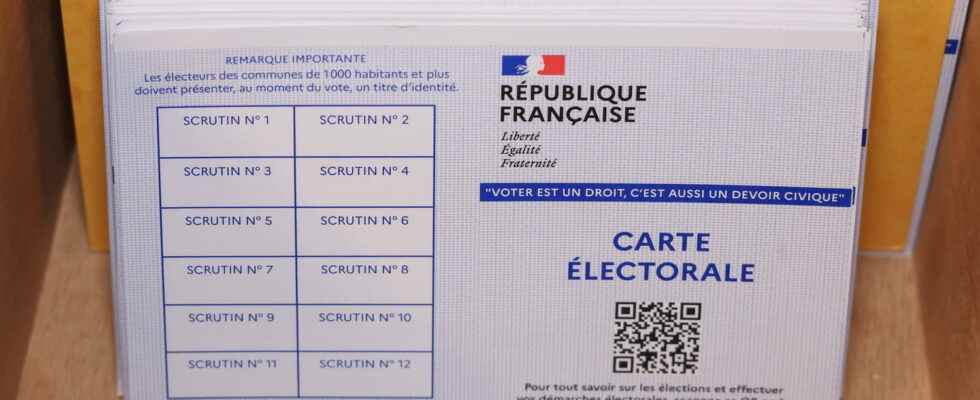This Sunday, April 10, the French go to the polls to support the candidate they wish to bring to the second round. During this voting period, it may be useful to remember a few definitions: abstention, vote cast… We take stock.
France votes this Sunday! Certainly, we should not expect a very significant mobilization this Sunday, April 10, given the recent polls which predict a record abstention rate for this presidential 2022. Certainly. But all the same: this Sunday, the French choose the two candidates who will face each other in a duel in the second round: this ballot is therefore crucial. To fully understand the results of these elections – which will of course be available on Linternaute.com as soon as they are officially announced – it is useful to review the definitions of the terms used. A little lexical tour.
The abstention rate represents the proportion of citizens registered on the electoral lists who did not go to the polling stations (and who did not make a proxy). If, during an election, the abstention rate is 50%, this means that 5 voters out of 10 did not take care to vote. Who are the abstainers? Absent citizens who have not had time to make a power of attorney, people who are not interested in politics or who refuse to support the political system, undecided people who, for lack of knowing who to vote for, do not move. .. As a reminder, during the first round of the 2017 presidential election, there were 10,577,572, or 22.23% of registered voters, during the second round, they rose to 12,101,366, or 25.44% of registered voters. More recently, during the regional elections in June 2021 for example, the final abstention rate in the second round was 65.31%, while it was only 41.59% in 2015.
The abstention figure is the exact opposite of that of the participation. If 3 voters out of 10 deserted the ballot box, this means that 7 out of 10 participated in the ballot. Turnout therefore amounts to 70% in this case and represents the ratio of the number of voters to the total number of registered voters on the electoral lists. During the first round of the 2017 presidential election, 37,003,546 voters went to the polls, i.e. 77.77% of registered voters. During the second round, they were 35,467,327 voters, or 74.56% of those registered. More recently, in the regional elections of June 2021, it was 36.49%, which represents a drop compared to the previous regional ones, with 58.41% of registered voters who voted in 2015 and 51.21% in 2010. L’abstention should not be confused with blank or invalid votes.
The blank vote consists of going to the voting booth and not slipping any ballot into the envelope. The voter who votes blank places his empty envelope in the ballot box, signs the register, but his vote is not counted in the results. He went to his polling station and therefore does not contribute to the abstention figures, but his civic action counts for nothing. The white vote is also to be distinguished since the European elections of 2014 from the invalid vote since now, the blank vote is counted. There were 659,302 blank votes for the first round of the 2017 presidential election, i.e. 1.78% of voters, then 3,021,499 in the second, i.e. 6.35%. Today, half of the candidates (6/12) in the 2022 presidential election are in favor of recognizing the blank vote in the elections.
This corresponds to a vote marred by an irregularity: two ballots slipped into the envelope, a crossed out or torn ballot, a ballot in the name of a candidate who does not present himself… The invalid vote does not enter either in the calculation of the results, unlike the blank vote. According to the electoral law, it is not a “cast vote”. For the first round of the 2017 presidential election, the number of invalid votes was 285,431. It exceeded one million in the second round.
The vote cast corresponds to a vote which can be duly recorded because it is not blank and not zero. It is often replaced in the comments by the word “voice”. The number of votes cast (or number of votes) is what determines the outcome of an election. During the first round of the 2017 presidential election, there were 36,058,813 votes cast. In the second round, they were 31,381,603. More recently, during the French regional elections of June 20 and 27, 2021, there were 14,680,885 votes cast in the 1st round (which represents a drop of 16.6 points compared to the regional of 2015), and 15,932,659 in the second round (a drop of 23.7 points compared to 2015).
the number of registered represents the total number of voters registered on the electoral lists. For the 2021 regional elections, more than 47.5 million people were registered on the electoral lists throughout France. And, for this 2022 presidential election, 48.7 million French people were registered on the electoral lists at the end of March, which means that 95% of French people of voting age are on the list.
